Yucca Leaves Drooping? Don’t Give Up On It Before Trying This Horticulturist’s Advice
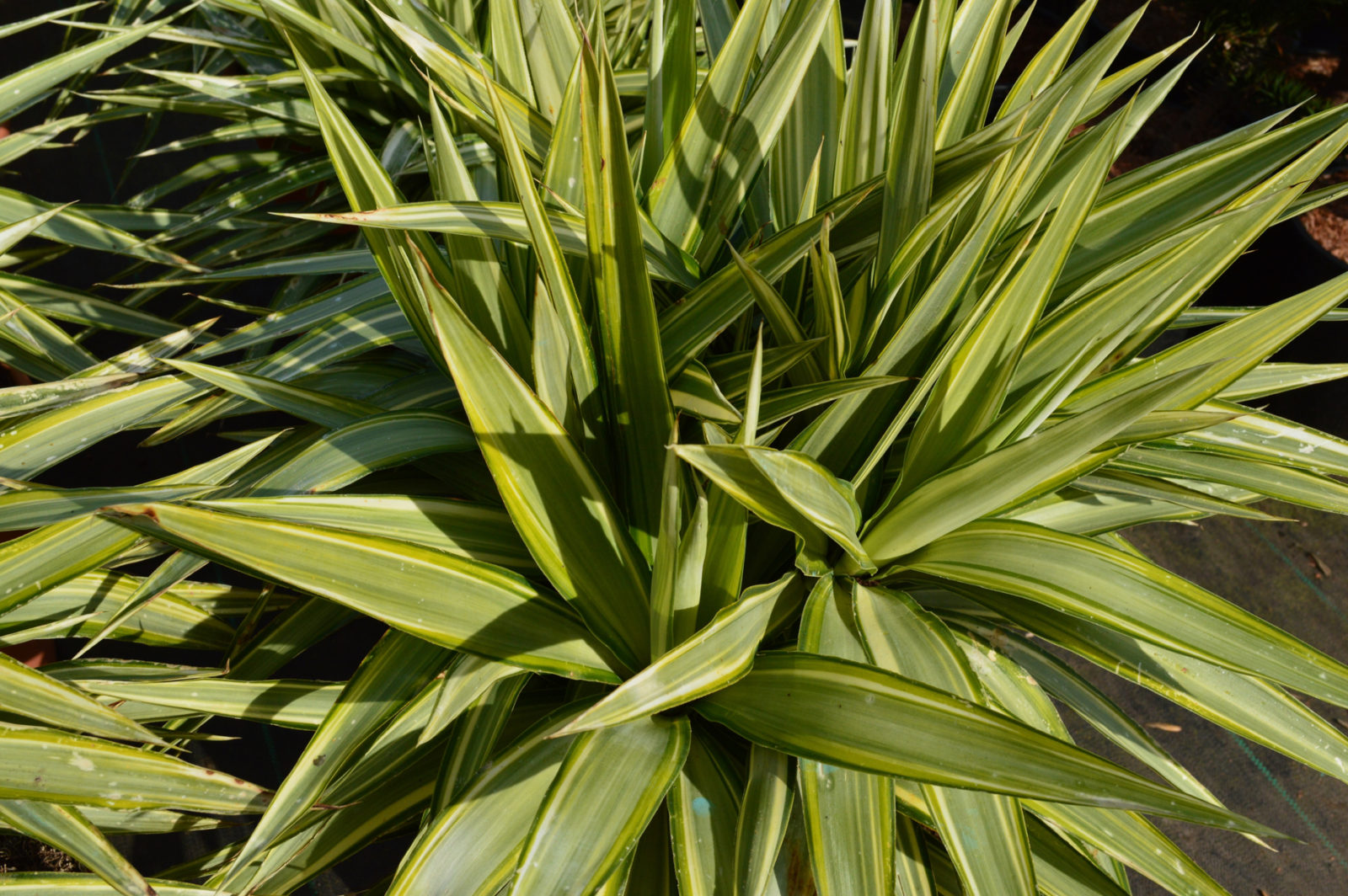

Elizabeth is a Permaculture Garden Designer, Sustainability Consultant and Professional Writer, working as an advocate for positive change. She graduated from the University of St. Andrews with an MA in English and Philosophy and obtained a Diploma in Applied Permaculture Design from the Permaculture Association.
Reviewed By COLIN SKELLY

Colin is a Horticulturist and Horticultural Consultant with experience in a range of practical and managerial roles across heritage, commercial and public horticulture. He holds the Royal Horticultural Society’s Master of Horticulture award and has a particular interest in horticultural ecology and naturalistic planting for habitat and climate resilience.
YUCCA GUIDES
Common Problems
– Brown Spots
– Droopy Leaves
– Leaves Turning Yellow
– Root Rot
Division
Overwintering
Revival
Varieties
Watering
Yuccas can often be relatively easy and trouble-free houseplants to grow, and can also work well outside in certain areas of the UK.
However, like any other plant, they can encounter issues now and then.
Drooping leaves are one of the signs that your yucca is not entirely happy and you may need to carry out a little detective work to determine exactly what is wrong.
Drooping leaves are often a sign that:
- Light levels are too low.
- You have not watered your yucca enough.
- You have watered too much or the soil is waterlogged.
- The yucca has been exposed to temperatures too cold for the particular variety you are growing.
Read on to understand each of these issues and their solutions in more detail.
1) Low Light Levels
Most yuccas need a reasonable amount of sunlight each day.
Drooping leaves can be a sign that your yucca, especially if grown indoors, is not getting enough light.
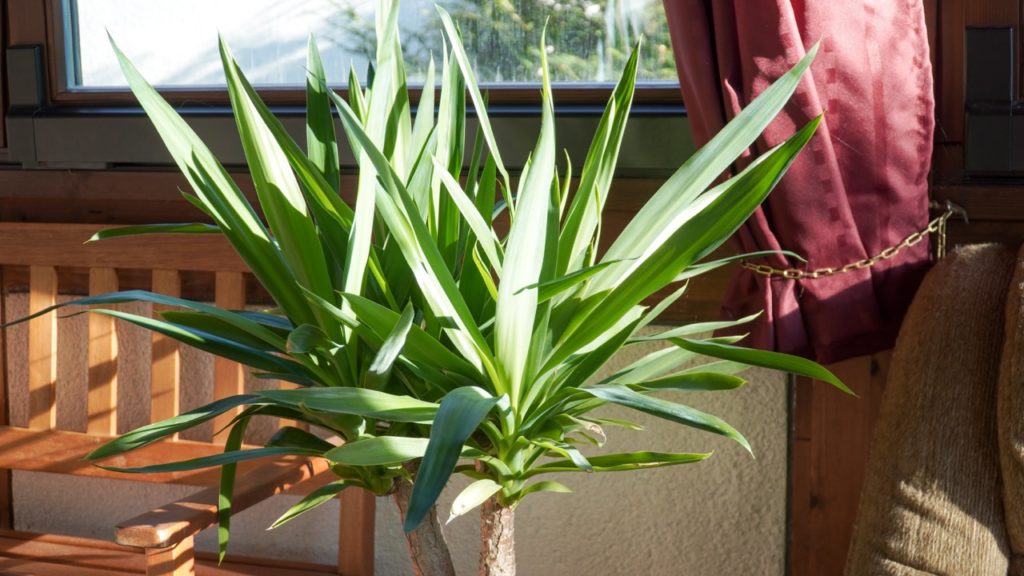
Move your yucca to a brighter location and it may well recover.
If the issue is not resolved, the droopy leaves may eventually drop off the plant.
2) Water Shortage
A yucca with drooping leaves might also be a sign that you have not given your plant enough water.
Though yuccas need good drainage, you should also water freely throughout the growing season between April and September, making sure not to let the growing medium dry out entirely.
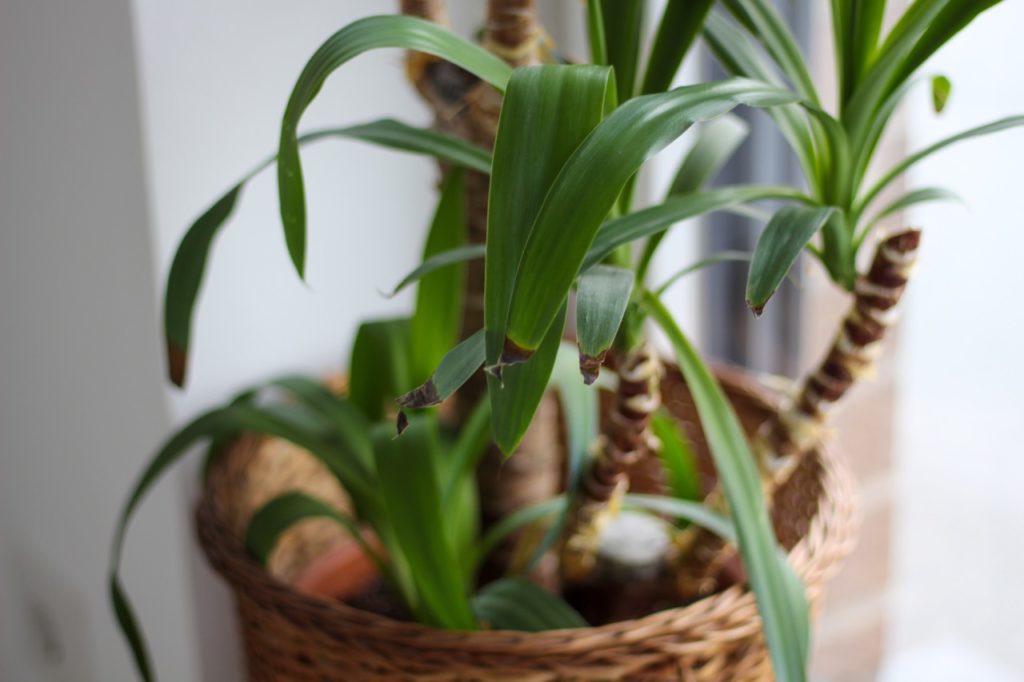
During the dormant period in winter, allow the top 5cm of your potting mix to dry out and then water well, making sure that the surplus can drain away freely.
If this problem is not resolved, the drooping leaves will likely turn brown and the plant may ultimately die.
3) Overwatering
Drooping leaves can also be a sign that you have watered too much or that the drainage in your container is not sufficient.
However, drooping leaves in this case are usually accompanied by some sudden yellowing of the leaves on your plant.
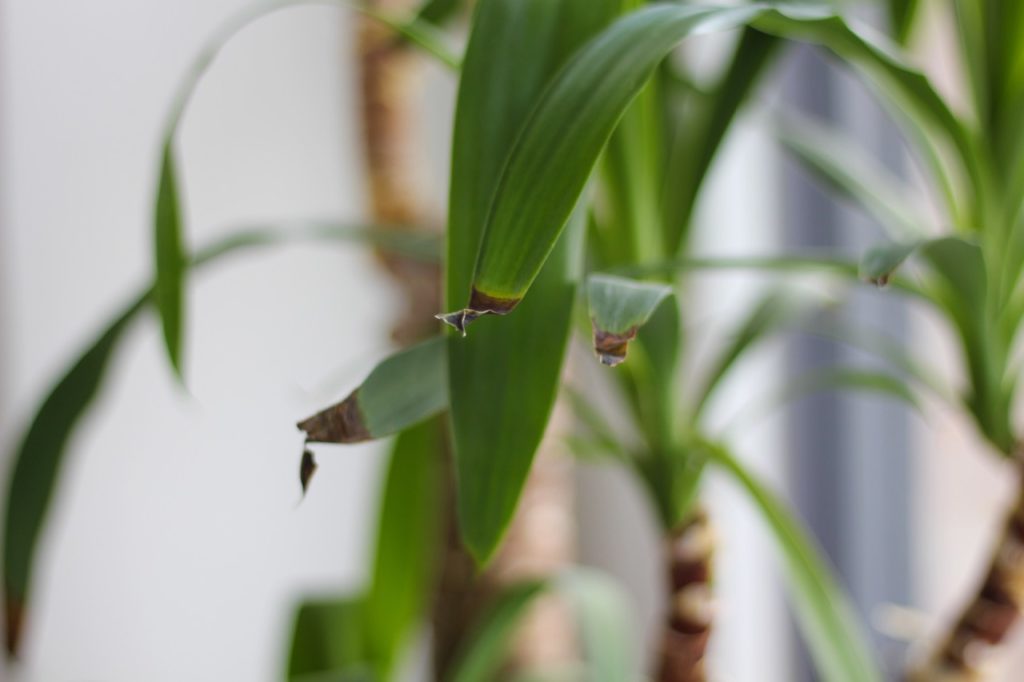
If you think that overwatering may be the issue, reduce watering and allow the plant to virtually dry out.
If the problem has continued long enough that the roots have rotted, remove the plant from its container and discard any rotted roots and the medium.
Re-pot your yucca in a container just big enough to accommodate the smaller root ball, water sparingly, and it may recover.
4) Cold Temperatures
An unexpected cold snap may also cause the leaves to droop on a yucca that is growing outdoors.
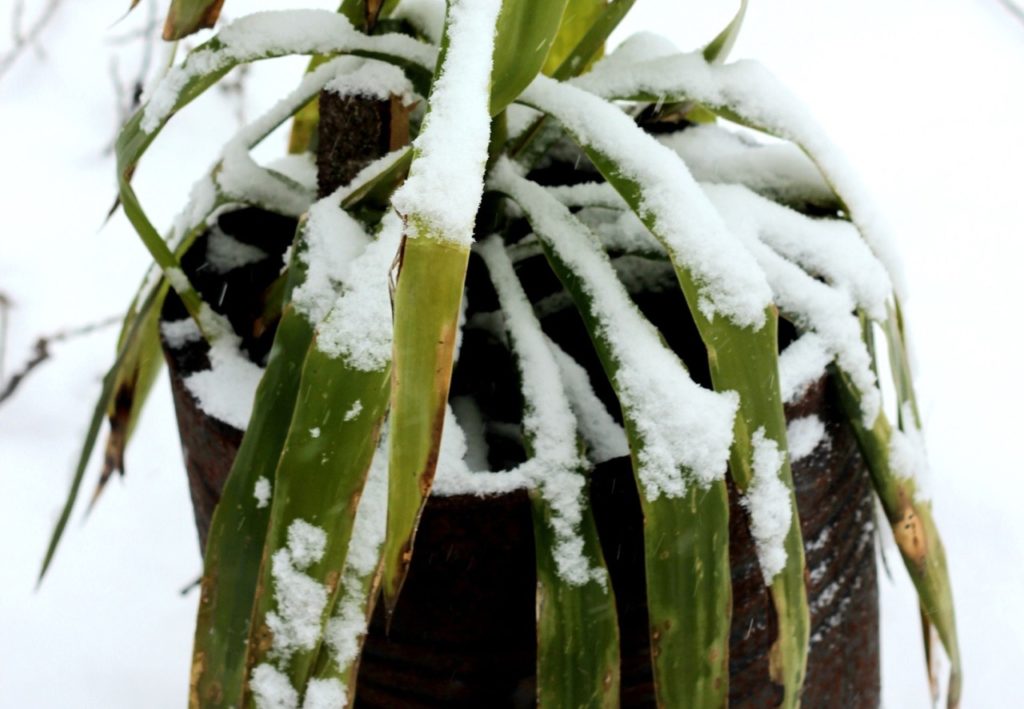
Tender yucca will not be able to tolerate temperatures below 7°C at night and can only be over-wintered indoors, but even hardier options will struggle if the weather is particularly cold.
Protect hardier types growing outdoors with horticultural fleece or move them to a greenhouse or other undercover area if a cold snap is forecast.
“If your Yucca is outdoors and gets frost damage, don’t give up on it and dig it up immediately,” says Master Horticulturist Colin Skelly.
“There is a chance that it will recover into May and June and show signs of life where there were none before.”
